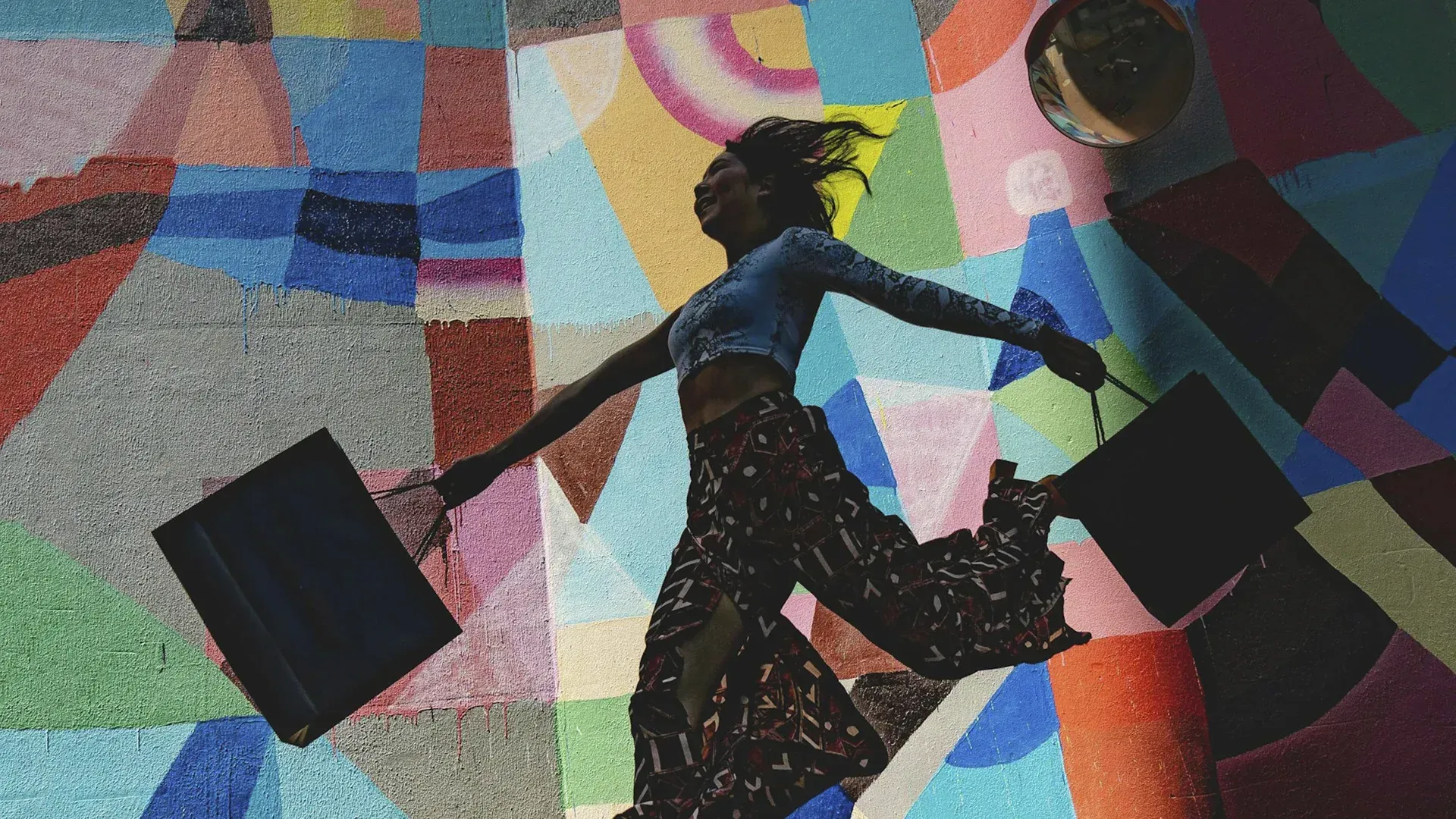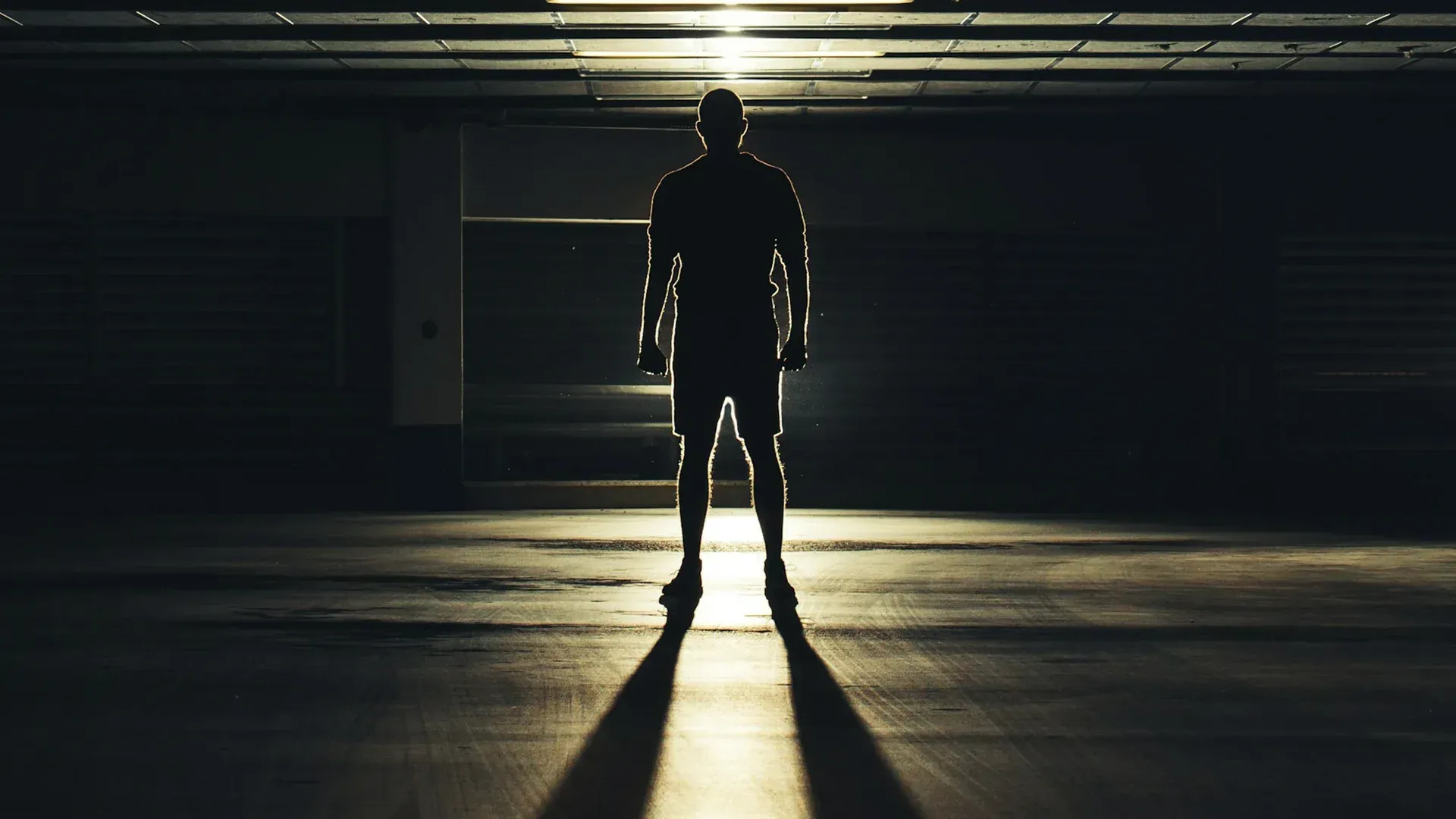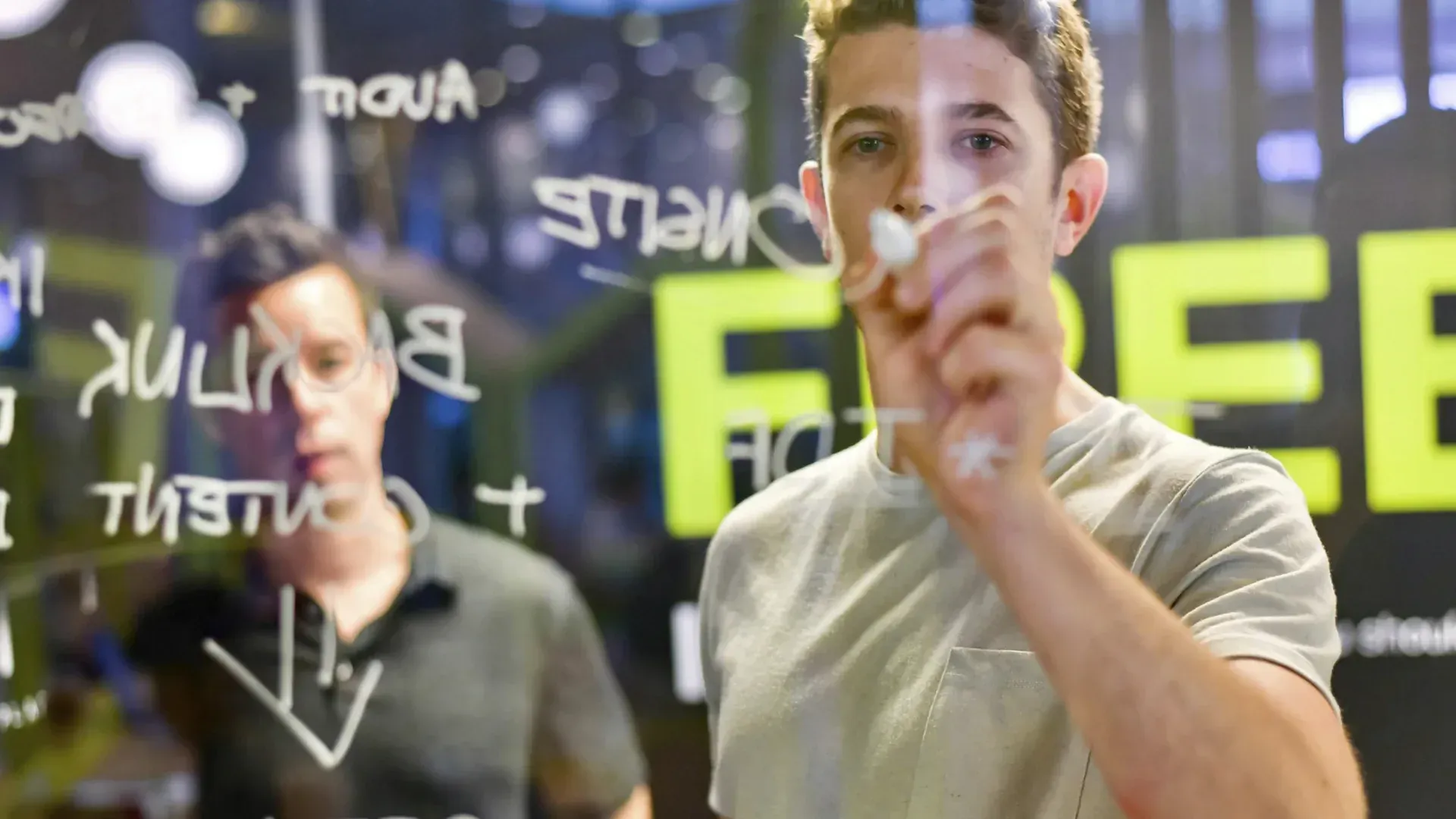The Ultimate Guide to Visual Search The Future of Digital Discovery
If SEO is the map, Visual Search is the compass.
We’ve officially crossed into a world where your camera is becoming the primary search bar—and brands that ignore this trend are giving away revenue.
What Is Visual Search?
Visual Search is the use of real-world images (e.g. screenshots, photos, and Augmented Reality scans) to initiate online searches. Instead of typing “white sneakers,” a user can snap a photo and the algorithm will find exact or similar products. In essence, visual search involves actively scanning the visual environment to locate a target object or feature among other objects or distractions.
Why it matters: We’re moving from search by words to search by sight. That shift isn’t coming—it’s already here.
Platforms leading the charge:
- Google Lens (10 B+ monthly searches)
- Pinterest Lens
- Bing Visual Search
- Amazon StyleSnap
Visual > Verbal.
The human brain processes images 60,000x faster than text. Visual Search doesn’t just streamline discovery—it shortcuts it. More than 85% of online shoppers place greater importance on visual information than on text information when purchasing items such as clothing or furniture.
How Visual Search Works
Visual search employs computer vision to analyze the visual features of an image and match it with similar images in a database. This process incorporates feature integration theory, which explains how the visual system combines various features to recognize objects.
Visual search engines utilize AI and machine learning algorithms to refine search results and provide more precise matches.
The visual search task involves locating a target object among distractors, with search time influenced by the number of distracting objects. When a search requires simple discrimination, such as distinguishing a shape from others, the process is highly efficient, with a slope often near zero. This is an example of efficient search, where the target can pop out due to preattentive processes—such as when a red circle is found among green circles—because ta unique feature distinguishes the target Here, the target is rapidly detected regardless of how many distractors share other features, illustrating the role of preattentive processes in feature-based visual search.
A conjunction search task, by contrast, requires identifying a target defined by two features (for example, both colour and shape), and search time increases as distractors share the same features with the target. In these tasks, the target does not pop out, and response times increase linearly with the number of distractors, reflecting the need for serial, attentive inspection. The distinction between efficient search and conjunction search tasks is a central focus of the visual search paradigm in cognitive psychology.
Why Visual Search Is a Game Changer for SMBs and Growth Brands
Visual Search doesn’t just level the playing field—it flips the board. Here’s how it changes the rules:
| Old SEO | Visual Search SEO |
|---|---|
| Keyword optimized pages | Image-optimized experiences |
| Metadata + backlinks | Alt text + structured image data |
| Blog-heavy | Product-rich |
| Search intent | Visual intent |
| Text-based queries | Image upload or live capture |
| Manual keyword typing | AI recognition of visual features |
| Static search results | Dynamic search mapping and results display |
| Longer path to purchase | Shortened path from search to conversion |
| Limited user interaction | More intuitive and interactive user experience |
| General search | Personalized and context-aware product recommendations |
| Search engine focused | Multi-platform visual search integration |
| Text-centric SEO | Visual commerce integration with AR and camera icons |
| Traditional analytics | Enhanced tracking of visual search performance |
| Desktop-focused | Mobile device and app compatibility |
| Text-based shopping | Visual shopping with instant product discovery |
Benefits of Visual Search
- Provides an efficient way to find similar images and products online, saving time and effort.
- Enhances the user experience by offering a more intuitive and interactive way to search for information.
- Helps users quickly and easily find similar images and products, reducing friction and improving conversion rates.
- Creates a more personalized shopping experience with relevant product recommendations and suggestions.
- Improves customer engagement and loyalty by delivering an interactive and immersive experience.
- Assists businesses in staying ahead of the competition by providing a unique and innovative user experience.
- Increases sales and customer engagement by shortening the path from search to conversion.
- Supports better search engine optimization (SEO) by delivering more accurate and relevant search results.
"The companies that dominate attention win. And attention is moving from text to image to camera."
Visual search is the next real estate. The question is—will your brand be visible when the lens finds you?
How Visual Search Works (In Human Terms)
- Image Upload or Live Capture: User snaps or uploads a photo. Users can also tap the camera icon in the Google app or other visual search engines to start a search using a picture or pictures.
- AI Recognition: The engine scans objects, patterns, text, and metadata to identify them.
- Search Mapping: Matches are drawn from catalogues, online stores, or knowledge graphs. The engine analyzes the spatial location of objects within the uploaded picture to improve accuracy.
- Results Displayed: Exact matches, lookalikes, or complementary options are returned.
This isn’t just about tech. It’s about trust. Consumers who search visually are 37% more likely to convert. Additionally, visual search leads to checkout twice as quickly as text-based search.
Top Use Cases for Visual Search
- E-commerce: The integration of visual search into e-commerce platforms and websites to provide a more personalized and interactive shopping experience. Shoppers scan a dress on the street and buy a similar one online.
- Food & Beverage: Snap a wine label to discover the producer, pricing, and recommended food pairings.
- Interior Design: Upload a couch picture, find retailer options, and create mood boards.
- Tourism & Local: Take a photo of a landmark, access historical data, and explore booking options.
- Retail Innovations: IKEA added visual search to its augmented reality app to help customers find similar products.
Examples of visual search in real-world scenes include identifying products in a busy street or matching a landmark to other images online. These scenarios demonstrate how visual search enables users to find related information and images based solely on image data.
Visual search bridges desire and discovery.
Visual Search Engines
Visual search engines utilize computer vision and machine learning algorithms to comprehend and identify visual features in images. They can be accessed through mobile devices, websites, or camera icons, making it easy to search for similar images and products across the web. Visual search engines accept various forms of image input, such as direct uploads or embedded tags, allowing flexibility in how users provide images for search.
- Google Lens is a visual search engine that can identify objects, translate text, and provide information about the items being searched. The company leveraged the treasure trove of images and videos available on Google Images to train the model.
- Bing Visual Search is another popular visual search engine that allows users to search for similar images, products, and pages with the image. The photos users upload are utilized to improve Bing image processing services, enhancing image recognition and analysis features to help users find related images across the web.
- Pinterest Lens is a visual search engine that helps users find similar products and ideas on Pinterest.
Enhancing the User Experience with Visual Search
Visual search has transformed the way users interact with online content, making discovery more intuitive and efficient than ever before. Instead of typing out long queries, users can simply upload images or snap a quick photo to start their search. Visual search engines like Google Lens and Bing Visual Search empower users to find similar items, related images, or even identify unknown objects in seconds.
Imagine seeing a unique pair of shoes on the street—just take a photo, and visual search will instantly pull up similar items, reviews, and online purchase options. This seamless process not only saves time but also makes the search experience more engaging and interactive.
Visual search also enhances accessibility and convenience. Users can translate text on signs, identify plants or landmarks, and explore related images with a single tap. For those browsing on the go, the ability to search using photos or images means less friction and more relevant results.
By leveraging the power of visual search engines, brands and users alike benefit from a smarter, more visual way to connect with the world of online content.
Visual Search and Accessibility
Visual search engines enhance accessibility, making the digital world more inclusive.
For those with visual impairments or dyslexia, traditional text-based searches can be challenging. Visual search transforms how information is accessed by allowing users to upload images or take photos, thereby eliminating the need for complex text queries. Users can identify objects around them and receive instant information or audio descriptions, simplifying their interaction with online content. For instance, a user can photograph a product or sign, and the visual search engine will identify it, providing relevant details or descriptions.
This technology also facilitates the creation of accessible websites by generating accurate alt text for images, aiding screen reader users in understanding visual content. As visual search engines evolve, expect to see more innovative features that provide richer, more accessible online experiences.
The Role of AI in Visual Search
Artificial intelligence is the powerhouse behind today’s most advanced visual search engines. AI algorithms analyze images, identify patterns, and interpret visual data to deliver accurate and relevant search results. Whether you’re using Google Lens to identify a plant or Bing Visual Search to find similar products, AI is working behind the scenes to make sense of every pixel.
For example, Google Lens uses AI to recognize objects, scenes, and even activities within an image, then connects you with the most relevant information or search results. Bing Visual Search leverages AI to enhance its image processing services, ensuring users get precise matches and helpful suggestions.
As AI technology continues to advance, visual search engines will become increasingly powerful, offering enhanced image recognition, faster search times, and more intelligent results. The future of visual search is all about harnessing data and AI to help users identify, discover, and connect with the world around them.
Visual Search on the Go: Mobile and Beyond
Visual search is no longer confined to desktop screens. With the rise of mobile devices, visual search engines like Google Lens and Bing Visual Search are now at your fingertips—anytime, anywhere. Mobile devices offer a unique advantage: users can take photos on the spot and instantly search for information, products, or similar images.
For example, the Google Lens app on Android devices allows users to snap a photo of a restaurant menu, translate text, or identify objects in real-time. Bing Visual Search also brings powerful visual search capabilities to mobile devices, making it easy to find products, related images, or information while on the go.
As mobile technology continues to evolve, expect even more innovative uses of visual search—think augmented reality overlays, virtual try-ons, and seamless integration with shopping apps. The future of search is mobile, visual, and always within reach.
Visual Search Optimization: How to Rank for the Lens
You’re not just optimizing for bots anymore—you’re optimizing for how people see.
The growth of new visual search engines and their integration into existing platforms for more accurate results is exponential.
Companies must incorporate visual search capabilities into their websites to boost SEO, enhance user experience, and drive traffic to their sites.
Visual Search Tactics to Dominate:
1.High-Quality Images
- Sharp, clutter-free, multi-angle product images win. Leverage one of the many tools to remove backgrounds wherever possible.
2.Alt Text That Actually Describes
- “Women’s black leather ankle boots with silver buckle” beats “Product Image 4.”
3.Image Sitemaps
- Tell Google where to find and crawl your image assets.
4.Structured Data Markup (Schema)
- Enable enhanced results, such as prices, reviews, and availability.
5.Visual Commerce Integration
- Use AR/visual search tools in your app, store, or listings.
Pro Tip: Start testing your brand’s visibility using Google Lens and Pinterest Lens.
Optimizing Images for Visual Search
- Use high-quality images with relevant alt text and descriptive file names.
- Compress images to reduce file size and improve page loading time.
- Use multiple images and 360-degree product videos.
- Use SEO-friendly image badges, names, and captions.
- Test and update images regularly
Tip: Following the above best practice can help maintain image search performance and improve visual search results.
Measuring the Success of Visual Search
Understanding how well visual search is performing is key to unlocking its full potential. Visual search engines track a range of metrics to measure success, including user engagement, conversion rates, search time, and accuracy.
For example, tracking how many users click on search results or make a purchase after using visual search provides valuable insights into user behaviour and satisfaction. Surveys and user testing can also reveal how intuitive and effective the visual search experience is.
Behind the scenes, visual search engines analyze data on search time, accuracy, and the ability to identify relevant results. By continuously monitoring these metrics, developers can refine algorithms and improve the overall user experience.
In a world where data drives decisions, measuring the success of visual search ensures that users get faster, smarter, and more satisfying results, making visual discovery better for everyone.
Visual Search in Numbers (And Why This Isn’t Optional)
Visual search technology has seen rapid advancements over the past decade.
- 62% of Gen Z and Millennials prefer visual search over any other new technology.
- Image-based Pinterest ads see 8.5% higher conversion rates than standard ads.
- Visual Search in e-commerce is expected to reach $40 billion per year by 2026.
In the near future, even more products and objects will be instantly identified by visual search engines.
If your images aren’t optimized, you’re invisible.
What Future Ventures Can Do for You
Your brand deserves to be seen by humans and algorithms alike.
We help clients:
- Audit and optimize image libraries
- Implement structured data for visual visibility
- Build integrated campaigns across Pinterest, Google, and AR tools
- Activate conversion-ready landing pages for visual searchers
This isn’t just SEO. This is See-Exceptional-Outcomes.
Visual Search: The Bottom Line
If you’re not preparing for a camera-first internet, you’re preparing to be ignored.
Next steps:
- Book a free digital visibility audit
- Download our Visual Search Checklist (PDF)
- Explore a case study on how we helped a retail brand 3x conversions
The internet is going visual. Let’s make sure it sees you.










